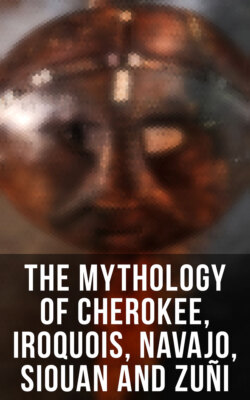Читать книгу The Mythology of Cherokee, Iroquois, Navajo, Siouan and Zuñi - James Mooney - Страница 52
На сайте Литреса книга снята с продажи.
Indian Child-Life
ОглавлениеOne of the most pleasing features in Indian life is the great affection and solicitude bestowed by the parents upon their children. As a close student of Indian custom and habit avers, "The relation of parent to child brings out all the highest traits of Indian character." Withal, infant mortality is extraordinarily high, owing to the lack of sanitary measures. The father prepares the wooden cradle which is to be the infant's portable bed until it is able to walk. The papoose has first a child-name, which later gives place to the appellation which it will use through life. Children of both sexes have toys and games, the boys amusing themselves with riding and marksmanship, while the girls play with dolls and imitate their mothers 'keeping wigwam.' In warm weather a great deal of the children's time is spent in swimming and paddling. They are exceedingly fond of pets, particularly puppies, which they frequently dress and carry upon their backs like babies. Among some of the southern peoples small figures representing the various tribal deities are distributed as dolls to the children at certain ceremonies, and the sacred traditions of the race are thus impressed upon them in tangible form. It is a mistake to think that the Indian child receives no higher instruction. This, however, is effected by moral suasion alone, and physical punishment is extremely rare. Great good-humour prevails among the children, and fighting and quarrelling are practically unknown.
At about fifteen years of age the Indian boy undertakes a solitary fast and vigil, during which his totem or medicine spirit is supposed to instruct him regarding his future career. At about thirteen years of age the girl undergoes a like test, which signalizes her entrance into womanhood.
Adventure with a Totem
